If you’re a chocoholic, you know that almond bark is among the most delicious treats.
The combination of dried almonds and velvety chocolate provides an irresistible taste that no other ingredients can touch!
Unfortunately, not everyone enjoys nuts or has access to them.
If you’re looking for a substitute for almond bark, several alternatives offer equally delightful flavors and textures.
Read on for several easy-to-find substitutes so that you can still enjoy amazing treats packed with rich flavor!
What Is Almond Bark?
Almond bark is a type of chocolate-based confectionery used in various baking and dessert recipes.
It is composed of chocolate and additives such as butter, oil, and sugar.
Almond bark can be purchased in thin sheets, then melted down and shaped to fit the desired recipe or dish.
The almond bark can also be purchased in pre-cut chunks, which are great for recipes calling for small pieces of chocolate that need to be melted down.
Almond bark is a popular choice among bakers and chefs because it is easy to work with and can be used in various confectionery applications.
Almond bark can also be used as a coating or topping for many desserts, including cakes, ice cream, and cupcakes.
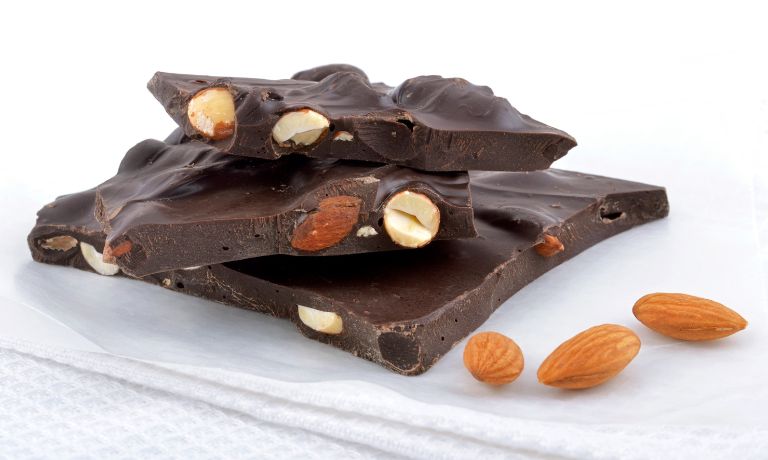
Substitutes For Almond Bark
Almond bark is a common ingredient in many recipes, but if you need an alternative, there are several options:
Caramel Bark
Caramel bark has a soft, chewy texture, and the combination of melted caramel and chocolate creates a rich, sweet flavor.
It can be used in baking recipes such as cookies, cakes, brownies and more.
It can also be a snack for ice cream sundaes or milkshakes.
Additionally, you can purchase premade caramel bark at most grocery stores or make it from scratch in your kitchen.
Making your caramel bark is easy and fun for kids, as they will love mixing the ingredients and creating their unique treats.
White Chocolate
White chocolate is a type of chocolate made from cocoa butter, sugar, and milk solids.
It does not contain cocoa solids like dark or semi-sweet chocolate, so it has a lighter flavor and color than other chocolates.
White chocolate has become popular in recent years as an ingredient in desserts such as cakes, cookies, ice cream, truffles, and bars.
It can also be used for dipping fruits and other treats or to make creamy sauces, glazes, and ganache for cakes.
White chocolate is often combined with other ingredients in baking recipes to add sweetness, texture, and flavor.
For example, it pairs nicely with nuts or dried fruit in cookies and muffins.
White chocolate can also be melted to create a drizzle or frosting for cakes.
For a truly indulgent treat, white chocolate can be melted and mixed with cream to make a rich and creamy ganache.
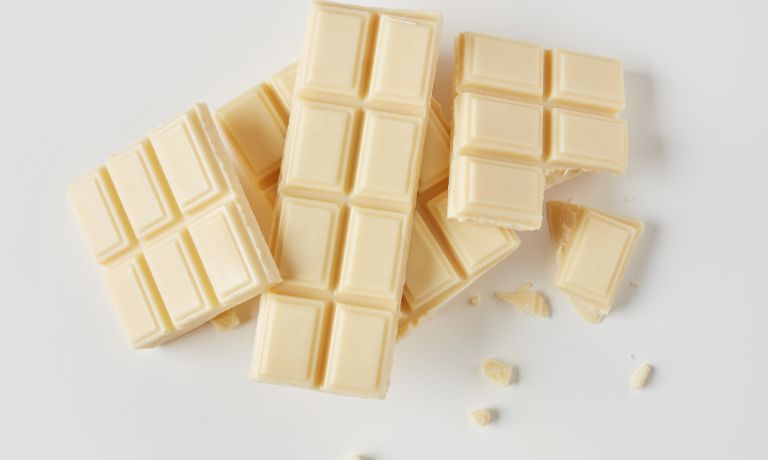
Dark Chocolate
Dark chocolate is a type of chocolate that is made with cocoa solids and often has little to no added sugar.
It has a deep, intense flavor profile compared to other chocolates.
Dark chocolate can be used in many ways when cooking, such as making truffles, cakes, cookies and brownies.
It also can be melted down and used for dipping strawberries, pretzels or marshmallows.
Dark chocolate is also a great topping for ice cream, adding rich flavor and texture.
Remember that the higher the cocoa content in the dark chocolate, the more intense the flavor will be.
Therefore when choosing a type of dark chocolate to use in baking, one should consider the flavor they would like their baked goods to have.
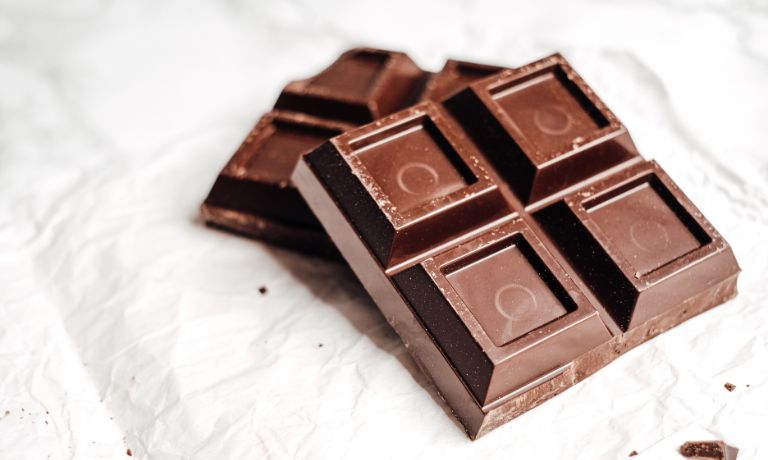
Baking Chocolate
Baking chocolate, also known as unsweetened or bitter chocolate, is a type of dark chocolate with most of its cocoa butter removed.
The result is a product with a much higher concentration of cocoa solids than regular milk and semi-sweet chocolates.
Baking chocolate has an intense flavor and several varieties are available depending on the percentage of cocoa solids used in the manufacturing process.
Baking chocolate is primarily used to create baked goods such as cakes, cookies, brownies, and even ice cream.
It’s often combined with other ingredients like sugar or milk to create a richer flavor.
Additionally, baking chocolate is sometimes used to create a chocolate ganache or a rich, velvety sauce that can be used to top desserts.
Baking chocolate is frequently melted with butter and other ingredients like cream, nuts, or spices to make fudge or truffles.
Note that baking chocolate should never be eaten alone as it has an extremely bitter taste.
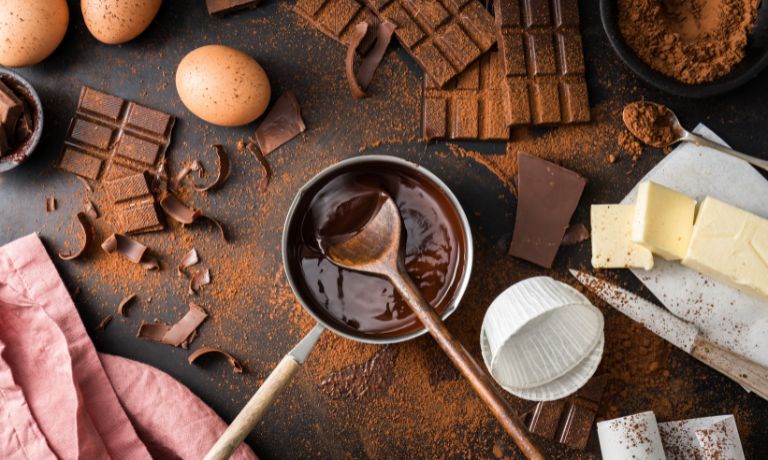
Couverture Chocolate
You can also use Couverture chocolate to substitute for Almond bark.
Couverture chocolate is a high-quality type used for baking and other culinary applications.
It has a higher cocoa butter content than other chocolates, making it ideal for recipes that require melting or tempering.
Professional chefs often prefer this type of chocolate because its texture and flavor create more visually appealing desserts with richer flavors.
It can be used for making cakes, truffles, ganache, mousses, fillings, glazes, sauces, fondants and more.

Chocolate Chips
Chocolate chips are small pieces of chopped-up sweetened chocolate.
The most common type of chocolate chip is made from semi-sweet or dark chocolate, but white chocolate chips, milk chocolate chips, and even sugar-free options exist.
They are often used to add flavor and texture to various dishes such as cookies, cakes, muffins, brownies, pancakes, and more.
Chocolate chips can make hot cocoa or a delicious ganache for glazing or dipping.
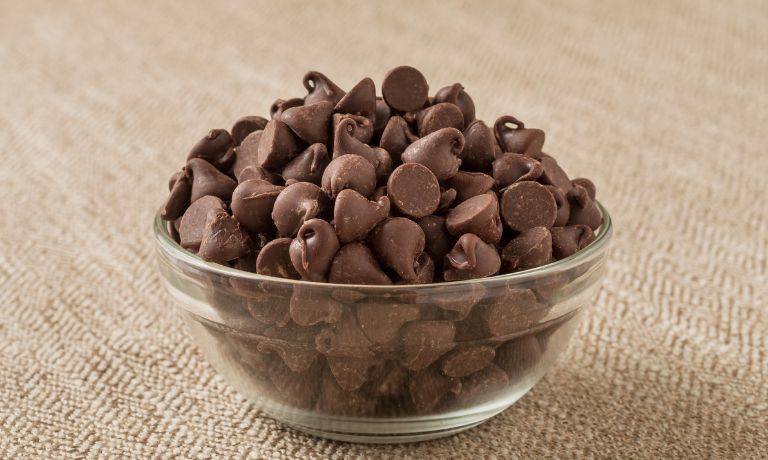
Candiquik
Candiquik is a compound chocolate made of cocoa butter, sugar, and vegetable oil.
It can be melted and used as an icing or filling for cakes, cookies, and other desserts.
It’s also commonly used to make candies such as truffles and bark.
Candiquik sets up quickly after melting, so working with it is best.
You can use a double boiler or microwave to melt Candiquik for baking and candy-making.
Once the Candiquik is melted, you can add natural food extracts, colorings, or other flavoring agents to create creative desserts and confections.
After adding additional ingredients, pour the melted Candiquik into your prepared pans or onto a parchment-lined baking sheet and let cool for a few minutes.
You can cut your Candiquik into shapes or use it as icing when cooled.
Candy Melts
Candy Melts are a candy coating used in baking, decorating and making confections.
They are made from sugar, vegetable oil, cocoa butter and flavorings.
Candy Melts come in various colors and flavors and melt quickly when heated.
They can create creative treats like cake pops, molded chocolates, dipped pretzels and candy apples.
They can also make decorative accents for cakes, cupcakes and cookies.
Candy Melts are a fun and easy way to add sweetness and color to any recipe.
FAQs
Can You Replace Almond Bark With Chocolate Chips?
Yes, you can replace almond bark with chocolate chips.
Chocolate chips have a higher fat content and will melt more easily than almond bark, so they should work in most recipes for almond bark.
Can White Chocolate Replace Almond Bark?
Yes, white chocolate can be used as a substitute for almond bark in some recipes.
However, the flavor profile of white chocolate is not as strong or nutty as that of almond bark and may not provide the same level of texture.
Can Dark Chocolate Replace Almond Bark?
Yes, dark chocolate can be used as a replacement for almond bark.
Dark chocolate has more cocoa content than almond bark and will provide a richer flavor in recipes.
Conclusion
When trying to find a substitute for Almond bark, you have many options depending on the recipe and use intended.
White chocolate, dark chocolate, baking chocolate, couverture chocolate, chocolate chips and candy melts make great almond bark substitutes in different recipes.
Each of these chocolates has unique properties, providing different flavor profiles and textures.
When selecting the right one for your recipe, it is important to consider what type of flavors and texture you would like the final product to have.

